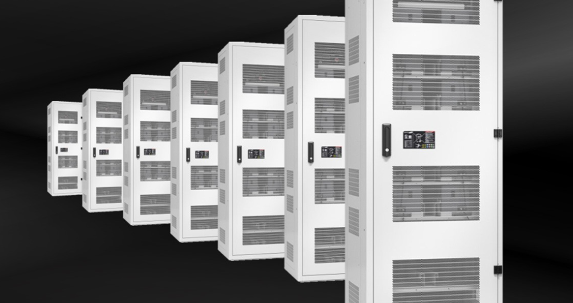Marc Garner, of the Secure Power Division at Schneider Electric, discusses the UPS considerations that have to be factored in when choosing between Li-ion and VRLA batteries.
Given their many advantages over traditional technologies such as valve-regulated lead-acid (VRLA) batteries, lithium-ion is fast gaining popularity as a power backup option for Uninterruptible Power Supplies (UPS).
A 2018 Bloomberg New Energy Finance report forecasted that Li-ion technology will comprise 40% of all data centre backup batteries by 2025, and that in the hyperscale sector, Li-ion would become the predominant battery technology, accounting for 55% of UPS batteries.
Compared with VRLA, Li-ion offers users many benefits, including greater power densities, smaller size, less weight and longer operating life. They can also withstand many more charge/recharge cycles, typically more than 1,000 compared with 200-400, before losing their ability to provide effective backup power.
As a result, they occupy less space, incur lower maintenance costs and require less frequent replacement, offering the user a lower total cost of ownership (TCO) over the lifecycle. This helps to offset what was once considered a key disadvantage, an up-front cost premium, but even that is steadily diminishing thanks to ongoing development and increased manufacturing volumes.
Cost considerations
For data centres and other critical applications, power continuity is essential, and cost can often be a determining factor in the choice of technologies.
Total cost of ownership is determined as the cost of a UPS over its working life. For most, it is the aggregate of Capital Expenditure (CapEx), or the upfront cost of acquiring and deploying the UPS versus its Operating Expenditure (OpEx); the recurring cost of running, maintaining and servicing the system throughout its life.
A smaller investment in CapEx may be less likely to be challenged, but a change of mindset during the deployment phase can offer many benefits to the user in the long-term, especially from an operational perspective.
Studies by Schneider Electric’s Data Centre Science Centre, for example, and information included in White Paper #229: ‘Battery Technology for Data Centres’, offers key guidance for electrical contractors and found that over a 10-year period, Li-ion delivered a TCO that is between 10% and 40% lower than equivalent UPS systems based on VRLA.
Furthermore, the smaller size occupied by a Li-ion battery is of obvious advantage to those responsible for larger enterprise colocation environments and whose revenues depend on maximising the white space. Here, real-estate savings can offer an instant improvement to the bottom line, especially when multiplied by the many hundreds, if not thousands, of assets located in a large facility.
Remote management capabilities
Built-in battery management systems including software, sensors, switches and microcontrollers are an essential component of any Li-ion UPS system. Due to their chemical makeup and higher energy density, they are sensitive to being overcharged unless managed properly. Not only does this software greatly improve the safety and reliability of the UPS, it also makes Li-ion systems a natural fit for remote management.
As the maintenance and operation of data centres becomes increasingly service driven and requires expert guidance from electrical contractors and specialist power partners, UPSs’ will include Internet of Things (IoT) technology to provide data about their internal status and operation via tools that enable greater remote management capabilities.
Another key benefit is the longer operational life of Li-ion, which is typically 10 to 15 years, compared with VRLA alternatives that offer a lifecycle of four to six years. This means greater reliability, fewer battery replacements and less frequent maintenance visits, offering the user a lower overall servicing cost.
Tools to enable data driven decision-making
No matter what type of UPS is selected, the ability to right-size against the specific needs of the application is essential, especially from the perspective of energy usage. Due to the mission-criticality of a UPS, power protection systems can be often over-provisioned, increasing operating costs and energy usage dramatically.
To aid electrical contractors and partners further in the decision-making process, Schneider Electric has created a series of digital TradeOff tools, which model the cost implications of deploying new critical infrastructure technologies. The Lithium-Ion vs. VRLA UPS Battery TCO Calculator can assist in the process of choosing a UPS type and the battery configuration most appropriate for the environment it is being deployed in.
By varying inputs such as capacity, service life, backup time and battery replacement period, and selecting the expected operating costs from local power and real-estate, electrical contractors can use the tool to estimate the cumulative cost of deploying a Li-ion or VRLA UPS and make a data driven assessment based on the applications needs. The Lithium-ion vs VRLA Battery TCO Calculator also helps the user identify the most energy efficient and cost-effective choice.
Today, power continuity remains essential for all critical infrastructure applications, each with its own business case and backup needs. Looking forward, energy efficient technologies offer the user a far greater return on investment (ROI) and a reduced carbon footprint, increasing uptime and availability with lower emissions.
– This article originally appeared in the May 2020 issue of ECN.



